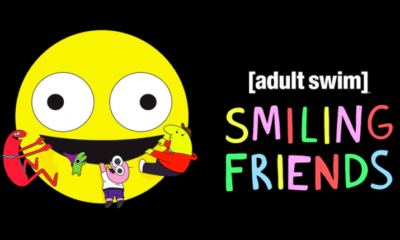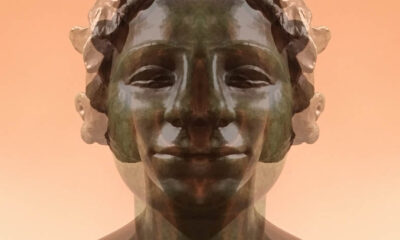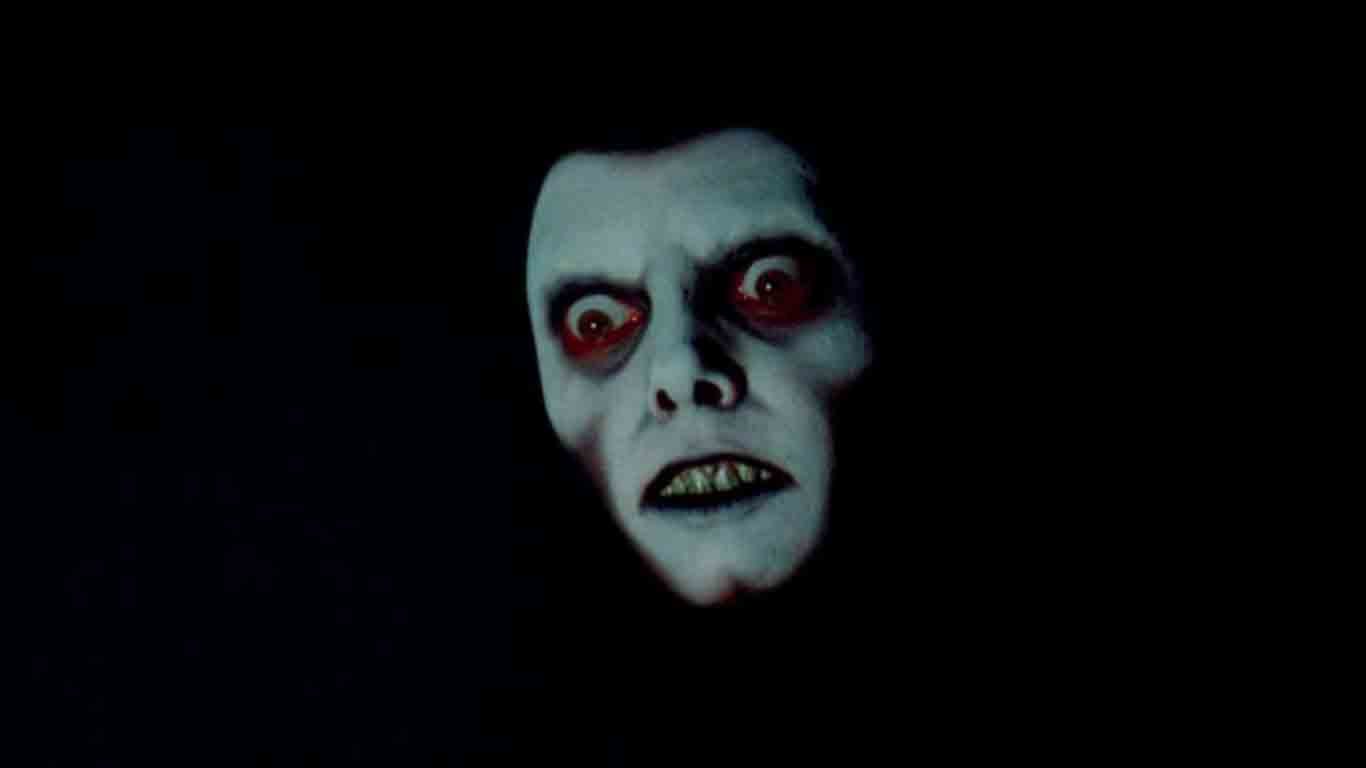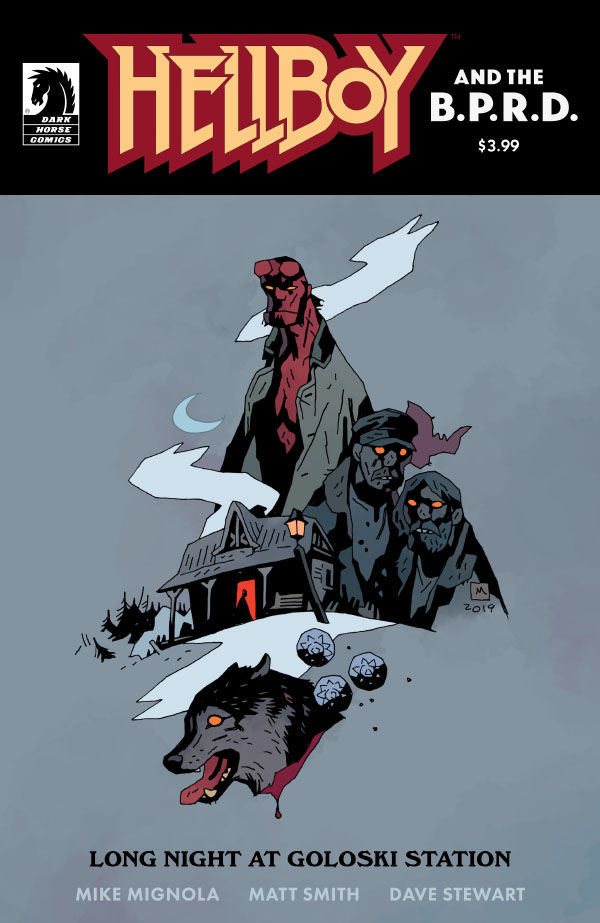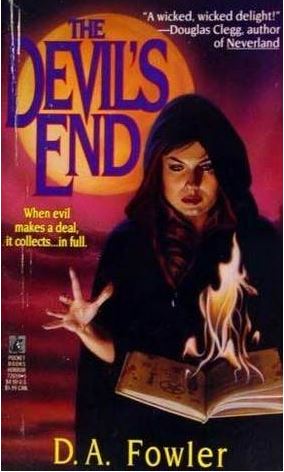
Review: The Devil’s End by D.A. Fowler is an Eyeball Explosion at the very end
More Videos
Published
5 years agoon
By
J.M. BrannykTrigger warnings: animal abuse and gore mentioned
So, I wish that I had seen the original cover because that would have answered some of my questions. Not all of them, oh heavens no, but a good lot of them. Like, what time period are we in? I asked myself this over and over because it was unabashedly unclear. With references to Dick Tracy, Lana Turner, and MTV – it could be anywhere from the 1930’s to 1990’s (let’s get real, after the 90’s there really wasn’t an MTV anymore). With kids going to the corner store to get a coke and ride around town, it sounds like the 1960’s. But in one instance, it makes fun of the 1950’s, as if it were an era from a hundred years ago. It is both in the past and in the future. It is a paradox!
Oh wait, here’s the original cover:

Okay, great. Late 80’s, early 90’s – got it. Poof, I’m there. And I’m deducing that it was written by an older person because, again, a nine year old boy doesn’t know what the hell a Dick Tracy is in the late 80’s-early 90’s (trust me, no one saw that film and everyone who has has long since blocked it from their memory).
Oh, what, you want to know about the book? Oh, yes, I should review it since I read it. Or rather, listened to it, via Audible. This is the Audible cover:
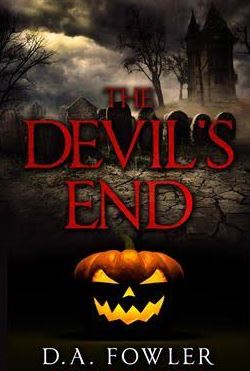
I have to say, it doesn’t do it any justice at all. Even for a book that I’m about to give two Cthulhus to, it deserves the original cover because it explains the book so much better and is just a beautiful image. It primes you for what the book is truly about and what to expect – white people problems witchcraft.
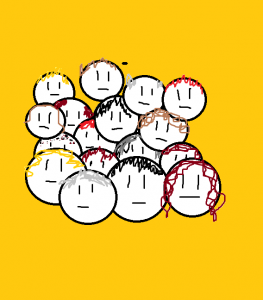
The Plot:
There are a million characters, I’m going to narrow them down to three: Nancy, Lana, and Spiro.
Lana is the new girl in town, just moved from Texas after her mother’s messy divorce and work relocation. She is beautiful, but down-to-earth, and trying to find new friends while her mother resettles and her younger brother is a straight-up asshole. She is just the girl next door, literally.
Next door lives Spiro, a boy Lana’s age, with developmental and intellectual disabilities. He is shy, awkward, and horrendously bullied at school, regardless of his enormous stature. Growing up fatherless, his mother is cruel and archaic, punishing him for every imagined slight and then often neglecting him. He becomes infatuated with Lana, due to her kindness.
Nancy is a popular girl in the school, brash and unafraid of anything, she goes into the crypt one night of the local cursed family and finds a book. The local legends say that the family were witches and had sacrificed a baby to the devil for powers and immortality, and intrigued, Nancy begins to dabble with the book, to see if the rumors are true.
All three of their lives interweave when mysterious things around town keep happening – could Nancy be the cause of it? Or perhaps the family isn’t as dead as everyone thought?
Thoughts:
Okay, first off, the beginning 3/4ths of this book are pretty uninteresting; it’s mainly setting up “character” where there just isn’t any. As stated, there are so many characters that it’s ridiculous, even the parents of the kids are introduced, and then other characters are introduced half-way in. It’s a mess. Honestly, a lot of it could have been cut down and wouldn’t be missed.
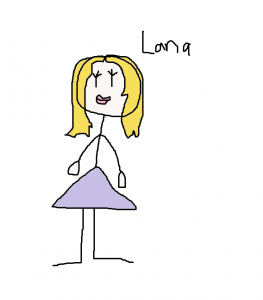
To boot, all of the characters (except for Lana) are awful, insufferable people. It’s hard to listen to them when they are moldy garbage people who are just as interesting as the little bits of toilet paper stuck to the tp roll. Lana is constantly surrounded by young men who want to sexually harass her, her brother who literally wants to ruin her life, and the clique-ish girls at the school. But at the same time, it’s hard to identify with her because we’re constantly reminded how utterly smoking hot she is.
Most of the reviews I’ve read love the first part and hate the second, or never even get to the second. The “second” is the last 1/4th and was infinitely better because it went bawls-to-the-walls insane and gory. Fowler is actually very good at writing gore and, hoo boy, there needed to be 80% more gore and spooky and 120% less talking about nothing and getting Cokes at the burger shop.

The gore is mostly body horror, but there’s plenty of animal murder (which a lot of people found offensive by the comments I read) and…I’m not sure how to put this…gross baby-making-type stuff. You could find it vulgar, I mostly just found it erring on the side of sexist (and yes, I know this was a lady writer). Eyeballs do explode. I found that delightful. I also was entertained when a character’s naughty-bits started “spraying blood all over the living room like an unmanned firehouse”.
There are a few clever ideas that I won’t let spoil the story but, lightly, I think how some of the demons manifest and are different characters would have been more terrific if better explored and savored. I always find demons as characters interesting; unfortunately, these were the typical, standard issue demons, which is almost ironic because there’s a point when someone does a bit with The Exorcist, and then Fowler just kind of copies it later. It would have been great to set up the human characters in the first part, slowly trickle the demons in with their own personalities so that we’re acquainted with them, and then go to the climax of the story with everything mixed.
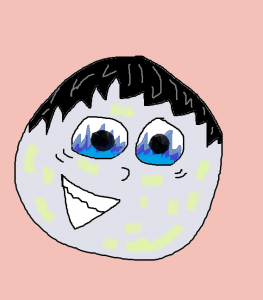
Honestly, I think this would have worked better as a short story or novella. There was too much fluff to get to where we wanted and needed to be.
Brain Roll Juice:
I’m going to get this out of the way first because it didn’t sit well and now that I have a timeline I can say, “Don’t give me ‘it was just different times’ bull-hockey.” It was, indeed, different times. Different, racist and sexist times. But before those fun times, let’s get to that other thing stuck in my craw – the treatment of Spiro. And I’m not talking about the kids in the book.

Spiro has some kind of developmental and/or intellectual disability, brought on from when his mother contracted German measles/Rubella and he, in utero, suffered from encephalitis (inflammation of the brain). He is seventeen, over six feet and two hundred pounds, and physically and mentally abused by his peers, teachers, and mother. He is in the same classes without additional support as his peers. He is punished with detention for “daydreaming”. He is called “’Tardo” and “freak” within earshot of teachers and authority figures. He is often physically abused by his mother.
He also turns into a disgusting creep and is painted in so broad and stereotypical a brush that I found it offensive.
From “gentle giant” stereotype to “creeper of the only nice girl to me” stereotype to “snapping from repression” stereotype to “spoiler spoiler spoiler” stereotype. There isn’t anything clever or sincere about the character and that chips my paint. He is the only diverse character in the whole bunch and he has absolutely nothing of substance to say or do. I was furious because I was excited to see a rare neuro-diverse character in horror as, what I thought, was a lead role (the first chapter starts with him – he introduces the story), or at least a sympathetic role.
And no, that ending doesn’t factor in. Without going into details, let’s just say that his send off was very similar to the classic moment in TV history:

The same sentiment can be said with the wildly racist comments that drop out of flipping nowhere, like, “that’s why Japanese people’s eyes are slanted…all the books they read”, “Is an African’s hair kinky?” (used like “does a bear sh– in the woods?”), and “ghetto blaster” as a sobriquet for a boombox. Or the introduction to the only black character at the end of the book that actually calls his peers, “chillun”.
Poor Michael Reaves, the narrator, for having to cough out these lines and make the best out of it. He’s even had to narrate a gastric sleeve cookbook and probably had a better time with that.

But let’s take a look back – this was published in 1992. The year that Dr. Mae Jemison became the first African American woman to travel into space; that the Kentucky Supreme Court held that laws criminalizing same-sex sodomy are unconstitutional (and accurately predicted that other states and the nation would eventually rule the same way); and a TWO full years after Americans with Disabilities Act of 1990 was signed into law.
So, what am I saying? I’m saying that you’re right. The times were different and changing. This book has aged and will continue to do so. Even if this is just a pulp horror novel, it’s also a time capsule. I can read this and watch a movie like “Scary Stories to Tell in the Dark” and see how far our narrative focus has changed. Call it SJW-appeasement or diversity-pandering, but it has changed. It’s no longer just 311 pages filled with average high school melodrama with occasional exploding eyeballs, but showing new facets from new perspectives to keep the same stories we keep telling each other fresh and engaging to more people.
And that leads me to wonder, what would these characters look like now? How would we react to them? How would they change the narrative if they were written today? And do people even know who Dick Tracy is anymore?

Bottom-line:
If you like gore, it’s drudgery to get through the first part. If you like character development, there isn’t much of any. If you like late-80’s to early-90’s nostalgia…I’d still advise against it. It’s not great and aged even worse.
 (2 / 5)
(2 / 5)
When not ravaging through the wilds of Detroit with Jellybeans the Cat, J.M. Brannyk (a.k.a. Boxhuman) reviews mostly supernatural and slasher films from the 70's-90's and is dubiously HauntedMTL's Voice of Reason. Aside from writing, Brannyk dips into the podcasts, and is the composer of many of HauntedMTL's podcast themes.

Book Reviews
The Hotel: We’ll All Be There Soon.
Published
2 weeks agoon
March 17, 2025By
C M ReidDaisy Johnson’s, The Hotel is a collection of stories that tell the tale of a hotel built on cursed land. Originally written and recorded as a series for BBC Radio 4 in 2020, (you can find the recordings here https://www.bbc.co.uk/programmes/m000mrcg/episodes/player )
The fourteen-story collection was released in hardcover in 2021. Johnson’s prose is haunting, weaving together the stories of generations of families who have been tempted, forced, or serendipitously dumped at The Hotel. Most leave the message, “I’ll be there soon,” and many disappear from room 63.
- ‘The British literary heir to Stephen King’ Johanna Thomas-Corr, Sunday TimesA triumph of contemporary horror from the Booker Prize-shortlisted author, this collection of short stories will haunt you long after you turn the final pageA place of myths, rumours and secrets, The Hotel looms over the dark Fens, tall and grey in its Gothic splendour
- Built on cursed land, a history of violent death suffuses its very foundations –yet it has a magnetism that is impossible to ignore
- On entering The Hotel, different people react in different ways
Last update on 2025-03-17 / Affiliate links / Images from Amazon Product Advertising API
The Plot.
The Hotel tells the stories of the people who are drawn to The Hotel, or, more accurately, the ground the hotel is built on. The first story explains what we know about the hotel, its tendencies, moods, and … hobbies. We are then introduced to Mary Southgraves, ‘The Witch’, who comes to live with her husband on the land on which The Hotel will be built. The villagers in the pond drown her for predicting a sickness that takes the village children, (no this is not a spoiler she tells you she dies on the first page of her chapter.)
The proceeding chapters build upon this story. We meet the workers who are brought in to fill the pond to begin construction. A child of a guest in 1968 who meets another girl who may or may not actually be there. A maid who takes part in séances and Ouija board sessions. The stories progress through time into the present.
Highlights.
The haunting prose of The Hotel does the majority of the heavy lifting for this collection, which makes sense since it began as a podcast series. Johnson’s prose leans towards poetry, albeit more Poe than Keats.
The repetition of specific characters and family names throughout the different stories was intriguing, giving the stories links. These links trigger a sense of recognition for the reader. There is also a sense of anticipation, knowing what has happened to these families already, we wonder how much more they can withstand. The Hotel is like a curse following these families, but I think Johnson is commenting on lineage and the consequences of past actions. The sins of the father and all that.
- Fifteen highly original and darkly unsettling supernatural stories, performed by some of Britain’s finest actresses ‘This is what we know about The Hotel
- It is bigger on the inside than on the outside
- Do not go into Room 63
Last update on 2025-03-17 / Affiliate links / Images from Amazon Product Advertising API
Drawbacks.
These stories can get confusing at times and I think this is due to the briefness of the stories. It’s hard to keep track of a character that you have spent four pages with and remember them three stories later. I found myself having to stop and turn back to check if that person was who I thought they were. This pausing to turn back interrupts the reading experience. It pulls you out of the story and destroys the atmosphere that Johnson has worked to create.
The Final Take.
The Hotel was an interesting read. Johnson is a talented writer who has published a collection of linked stories that will keep the reader turning pages if only to find out the final fate of these families. That being said, it is obvious that the stories were initially written for a podcast. I’m not sure if it’s the way they are put together or… I don’t know, there’s just something ‘podcasty’ about them. As such I would recommend listening to the audio episodes (see the link above) over reading the book.
 (3 / 5)
(3 / 5)
On Halloween in 2016 Josh Malerman, author of Bird Box, released A House At The Bottom Of A Lake (gosh this is a hefty title!). Last week, I picked this slim book up off my library’s Adult Horror shelves, not knowing what to expect. What I got was a novella that should have been shelved in the teen lit section. Perhaps it is the rather weird underwater sex scene that precludes it from those shelves.
- From the New York Times bestselling author of Bird Box and Malorie comes a haunting tale of love and mystery, as the date of a lifetime becomes a maddening exploration of the depths of the heart
- “Malerman expertly conjures a fairy tale nostalgia of first love, and we follow along, all too willingly, ignoring the warning signs even as the fear takes hold
- ”—Lit Reactor The story begins: young lovers, anxious to connect, agree to a first date, thinking outside of the box
Last update on 2025-03-10 / Affiliate links / Images from Amazon Product Advertising API
The Plot.
When James asks Amelia out on a date during summer break, canoeing was the last thing that she expected. Borrowing his uncles canoe, James hopes he can show Amelia an exciting time, because he really likes this girl! The date starts well and the conversation, if stilted at times, is banter-ey and cool.
They head out on the first lake, but James has an idea that they might have a better time on the lake that joins to this one. It is quieter, no speed boats to show him up, they’ll be able to eat their picnic lunch in peace and quiet. When they arrive, though, they notice a tunnel, that may lead to a third lake. Eager to show Amelia that he is an exciting kind of guy, James heads through the tunnel.
Lo and behold, it is another lake! Albeit, a bit murky and deserted, but that’s alright. That is until they notice that beneath the bow of the boat is a tiled roof. Beneath that tiled roof is a whole house. What ensues is a summer of falling in love and exploring a sunken house that may not be as empty as they thought.
Highlights.
Malerman writing the internal monologue of an angsty seventeen-year-old on a first date is one of the most authentic things I’ve read for a long time. Even down to James worrying about revealing that his dad owns the hardware shop he works in. Scared that Amelia will think that is all he is going to do with his life.
The ending (which of course I cannot discuss here) was well done, although a little contrived and predictable. It felt as if it had been almost tacked on the end as an afterthought. Perhaps Malerman finished the story without the final chapter, but was encouraged to add that last bit to give readers some closure
- “A book that demands to be read in a single sitting, and through the cracks between one’s fingers
- There has never been a horror story quite like this
- Josh Malerman truly delivers
Last update on 2025-03-10 / Affiliate links / Images from Amazon Product Advertising API
Drawbacks.
Malerman is a good writer, we have seen this in the many novels he has released since Bird Box. A House At The Bottom Of A Lake did not meet the usual standard. There are many reasons I say this. The first is a lack of creativity in descriptive passages in this book. They all felt pretty drab and began to become repetitive by the end of the story. I don’t know how many, times Malerman compared the way that James and Amelia were moving under the water in their scuba suits as ‘Astronaut-like’ or ‘Astronaut-esque’ or ‘ Like he was walking without gravity’, but really can you find another comparison please because this one is all used up!
As I mentioned in the intro, this did feel like a YA novel. Not only because both of the main characters are seventeen, but the prose is a too simple to be engaging. A House A The Bottom Of A Lake might be marketed differently in Australia (where this humble reviewer lives), perhaps making it to the YA shelves in the US or UK, but this is definitely not adult horror.
The Final Take.
Josh Malerman is a favorite of mine. I tend to pick up his books, blurb unread, because I will generally enjoy what he is putting out there. The exception to this rule is A House At The Bottom Of A Lake (if I never have to type that title again I will be pleased!). It just didn’t hit the way his other novels have and I was disappointed.
 (2 / 5)
(2 / 5)
Imagine this. You’re home alone, waiting for your partner to return, when you hear a knock on your door. You answer it to see a family of five, bundled up against the cold. The father, a kindly older gentleman, explains that he used to live in this house as a boy. And he would love to show it to his family.
Do not let them in.
The story
Released in June 2024, We Used To Live Here is author Marcus Kliewer’s debut novel. It tells the story of Eve, who just purchased a beautiful house with her partner, Charlie. Their plan is to flip the house and sell it.
One night, while waiting for Charlie to come home, Eve is surprised by a knock at the door. It’s a man named Thomas Faust and his family.
Thomas explains that he grew up in the house and hasn’t been in the area in years. Would Eve let them in so that he can show the home to his children?
Against her better judgment, Eve lets them in. She regrets this almost at once when Thomas’s daughter vanishes somewhere into the house.
What worked
I always appreciate a book that allows you to play along with the mystery. And this book does that better than just about any other I’ve seen.
Pay close attention to the chapters, to the words that aren’t there. To everything about this novel.
This is mostly down to Kliewer. This is ultimately his work of art. But the production value is also fantastic. I don’t want to ruin the multiple mysteries, so I’ll just say this. There are clues in this book that require some specific artistic choices in the page layouts in this book. And I loved that.
If you’d like to experience another horror book review, check out this one.
We Used To Live Here is also the kind of story that makes you question everything right along with the main character, Eve. Eve is a great main character. But she might be an unreliable narrator. She might be experiencing every single horror described, exactly as it’s described. Or, she might be having a psychotic breakdown. Through most of the book, we can’t be sure. And that is so much fun.
Finally, the weather plays a large part in this story. There are several stories in which the weather or the land itself could be considered a character. Even an antagonist. This is certainly one. The winter storm is the thing that traps the family in the house with Eve. It also makes escaping the home difficult. Reading this book during the winter was especially impactful. Most of us know what it feels like to be shut in by a storm. I’ve personally lived through some of those storms that are just referred to by their year, as though they were impactful enough to claim the whole 365 days for themself. And that was with people I liked. Imagine what it would feel like with strangers. It’s a staggering thought and one that we explore in depth in this book.
- Get Out meets Parasite in this eerily haunting debut and Reddit hit—soon to be a Netflix original movie starring Blake Lively—about two homeowners whose lives are turned upside down when the house’s previous residents unexpectedly visit
- As a young, queer couple who flip houses, Charlie and Eve can’t believe the killer deal they’ve just gotten on an old house in a picturesque neighborhood
- As they’re working in the house one day, there’s a knock on the door
Last update on 2025-03-08 / Affiliate links / Images from Amazon Product Advertising API
In the end, We Used To Live Here is a fantastic book. It’s the sort of story that sneaks into your brain and puts down roots. And if this is just the first book we’re getting from Kliewer, I can’t wait to see what else he comes up with.
 (5 / 5)
(5 / 5)

